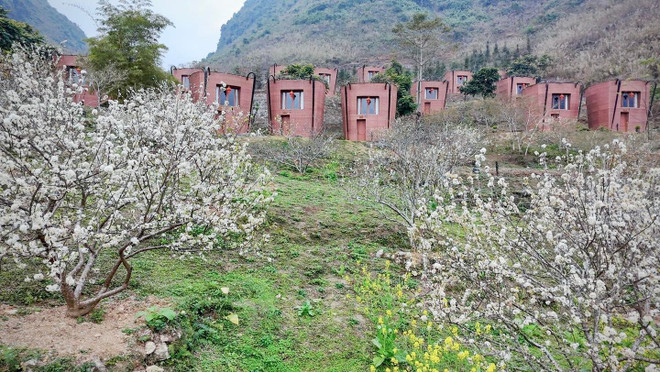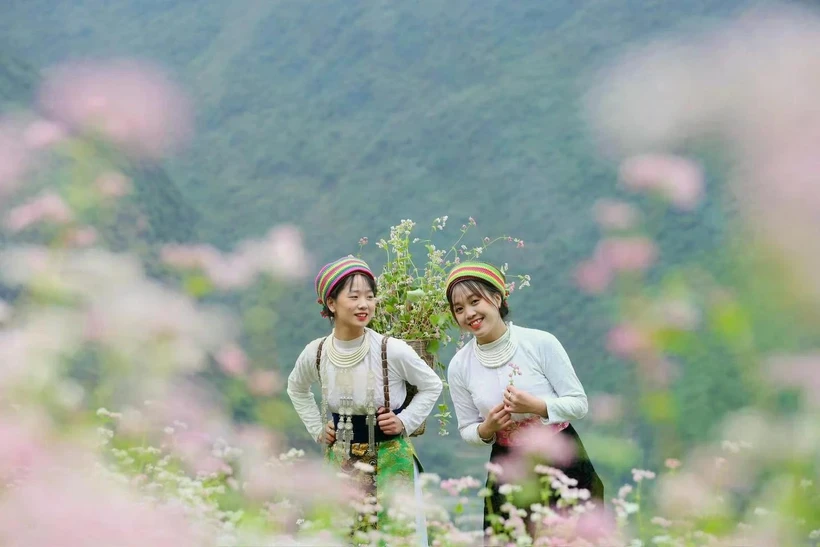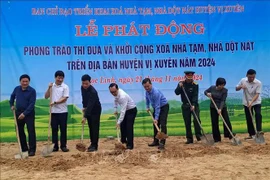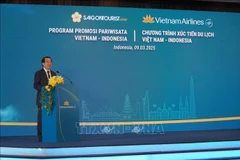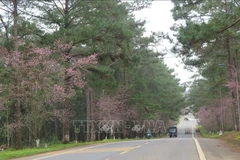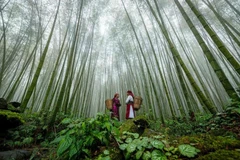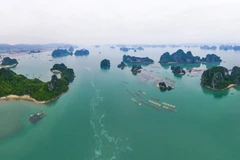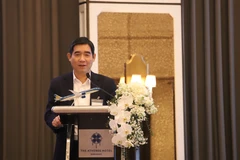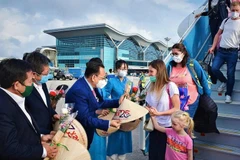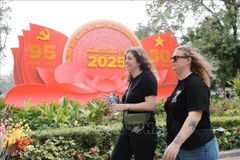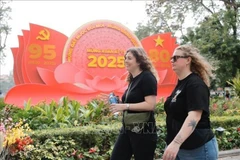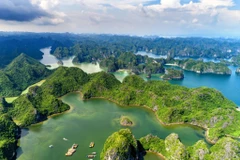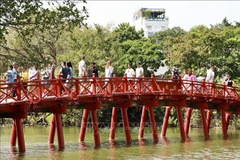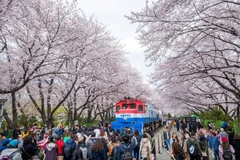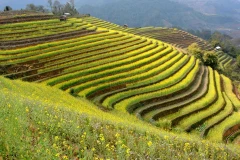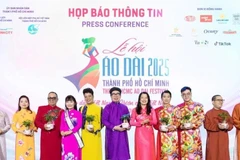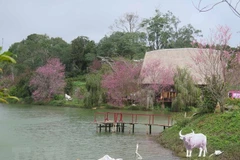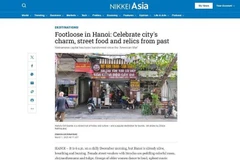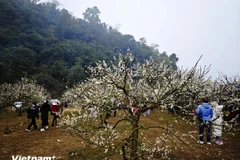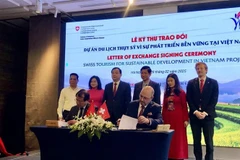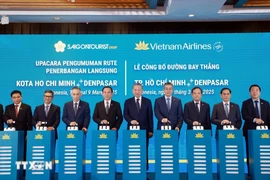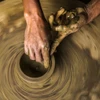Hanoi (VNA) - Chairman of the Ha Giang Tourism Association Lai Quoc Tinh says the northern mountainous province has identified culture as an intrinsic strength for socio-economic development, especially tourism. As tourism grows, it helps preserve the region’s rich cultural heritage.
"Anyone who hasn't visited Ha Giang should go at least once in their lifetime. I’ve been there many times, yet every visit brings fresh emotions and a deep desire to return. The road from Dong Van town to Thien Huong hamlet is absolutely breathtaking. Standing on a windy mountain pass, gazing at the vast, majestic landscape — it’s unforgettable!"
Many travelers share Lam’s sentiments after exploring Ha Giang. It’s no surprise that more visitors flock to this remote borderland, especially in spring, often leading to weekend overbookings in popular areas like Dong Van and Meo Vac. Tourists without reservations sometimes have to travel far or stay in neighboring districts to find accommodation.
In the first weeks of the new year, Ha Giang has seen an overwhelming influx of visitors, with traffic jams frequently reported on mountain passes like Tham Ma Slope, Bac Sum Slope, and Ma Pi Leng Pass. So what makes Ha Giang increasingly attractive?
VietnamPlus spoke with Lai Quoc Tinh, Chairman of the Ha Giang Tourism Association, to find out.
Leveraging intrinsic strengths for tourism development
Reporter: In recent years, Ha Giang has become an appealing destination for both domestic and international tourists, with community-based tourism serving as a model for other localities. What has driven this success?
Lai Quoc Tinh: Ha Giang’s success stems from its clear, long-term vision of positioning tourism as a spearhead economic sector and facilitate its growth.
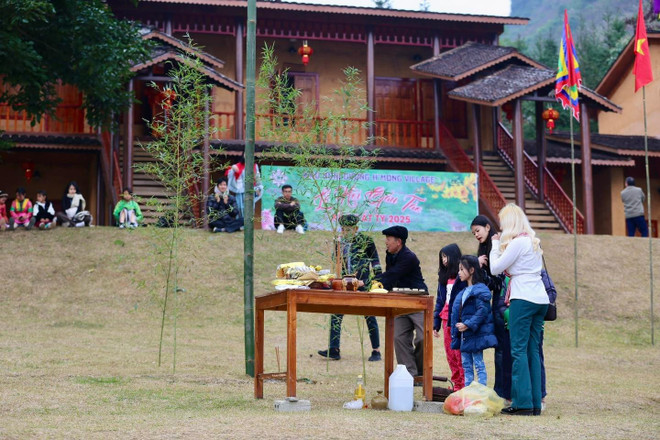
Local leaders and industry insiders have tapped into Ha Giang’s cultural heritage as a driving force for socio-economic development. As tourism flourishes, it helps preserve the province’s rich traditions.
Home to 19 ethnic groups, Ha Giang retains its traditional culture with minimal outside influence — a rare treasure that shapes its unique tourism products and attracts visitors from near and far. By blending breathtaking natural landscapes with authentic cultural values, we create truly unforgettable travel experiences.
Our slogan is “Ha Giang — A Land of Happiness.” When you visit, you travel along the “Happiness Road.”
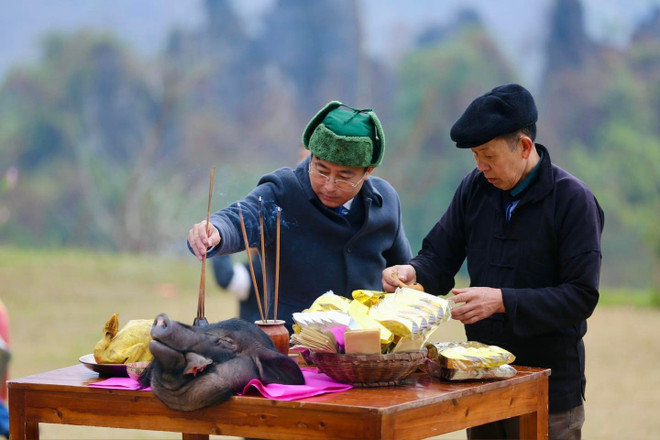
Reporter: Both local authorities and tourism businesses are taking a sustainable approach by preserving indigenous culture to boost the local economy. Though you’re not a Ha Giang native, you’re deeply committed to protecting its cultural identity. Could you share your journey?
Lai Quoc Tinh: We’ve built tourism around local culture as a foundation for socio-economic development. I’ve worked in Ha Giang for 25 years — it’s my second home. I’ve connected deeply with communities across the province, and that bond has strengthened my love and respect for this land and its people. Many remote areas here still lack modern amenities, and I see them with compassion. That’s why I’ve committed to preserving their cultural identity, including efforts to replicate traditional Mong architecture at the Mong Village resort.
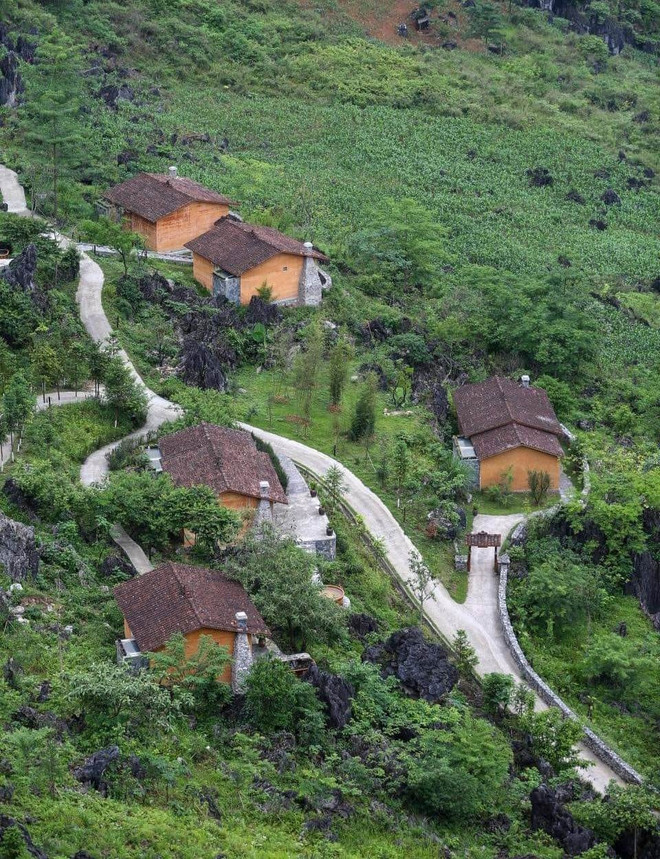
Through community-based tourism projects, we help locals use their cultural heritage as a strength to fight poverty and improve their economy. As their livelihoods stabilize, they invest even more in cultural preservation.
Reporter: Ha Giang has transformed rapidly, but with growth comes concerns about commercialisation. How do you see this?
Lai Quoc Tinh: We’re very mindful of that risk. Both provincial leaders and tourism professionals are committed to preserving Ha Giang’s authenticity.
So far, non-traditional architecture is mostly limited to town areas like Dong Van. In rural areas, especially along the "Happiness Road" to the Dong Van Karst Plateau Geopark, authorities encourage residents to maintain traditional styles.
Ha Giang’s vast landscape stands in stark contrast, and thus helps to curb urbanisation, and promote conservation. Combined with strong local awareness and government efforts, this helps preserve the region’s unique character.
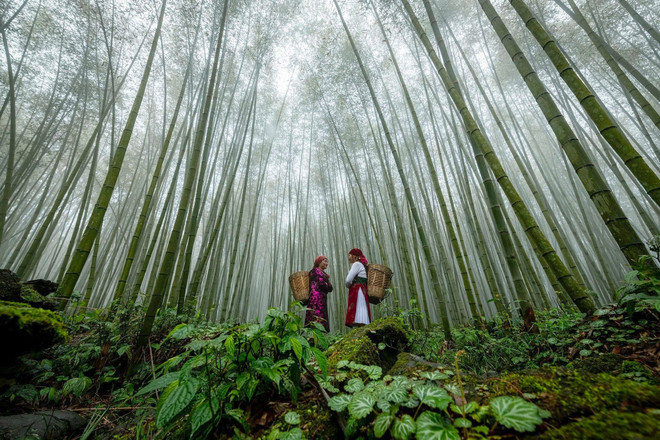
Reporter: What are challenges to educating locals on preserving cultural identity?
Lai Quoc Tinh: It takes a thoughtful approach. People listen when cultural preservation directly improves their income. For example, when locals perform traditional Mong flute and dance at cultural shows, they earn money — motivating them to pass down these traditions.
The popularity of traditional Hmong clothing also inspires pride. When tourists admire and wear these colorful outfits, it strengthens locals’ connection to their heritage.
This blend of economic benefits and cultural pride has sparked a movement of preservation. Today, Ha Giang has numerous cultural clubs, from Mong flute and dance groups to Tay folk music clubs. Renowned artists have also inspired young people to carry on these traditions.
Reporter: How do you assess the community’s progress in preserving cultural heritage?
Lai Quoc Tinh: The results speak for themselves. Ha Giang’s ethnic communities take increasing pride in preserving both tangible and intangible heritage. Traditional houses, clothing, and cultural practices are maintained with care.
Life event customs — weddings, funerals, folk songs, and musical performances — are being passed down to younger generations. Through cultural shows, locals improve their livelihoods while keeping their heritage alive. It’s an incredibly positive transformation.
Reporter: Thank you for your insights.
